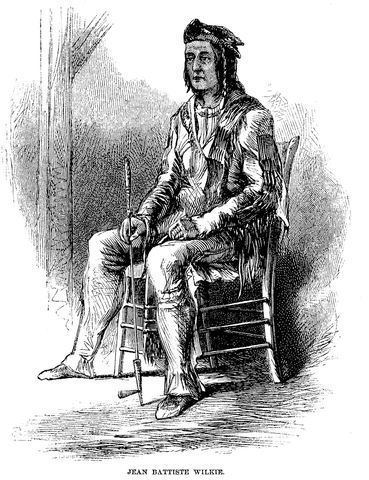Name Jean Wilkie | Died 1886 | |
 | ||
Jean Baptiste Wilkie (1803–1886) was a Métis chief from the Pembina area.
Contents
Wilkie's father, Alexander, was of Scottish origin and his mother was a Chippewa named Mezhekamkijkok. He married Amable Elise Azure, the daughter of Pierre Azure and Margaret Assiniboine. Many of his descendents currently reside in present-day North Dakota, Saskatchewan, Manitoba, and Montana.
Family
Jean Baptiste Wilkie had several children:
Accomplishments
On June 15, 1840, Chief Wilkie led 1,630 hunters in a buffalo hunt. A council was held to elect the leaders of the hunt, and ten captains were named. Wilkie was elected to be the most senior captain. Wilkie was also leader of the hunt in 1848 when the group clashed with the Sioux at the Battle of O’Brien’s Coulée near Olga, North Dakota and again in 1853 when he met Isaac Stevens of the US Pacific Railroad Surveys near Devil's Lake, North Dakota. (see Métis buffalo hunt)
Many Native Americans stopped at his house in the village of St. Joseph (now called Walhalla, North Dakota) (see Walhalla State Historic Site). In 1861, several Sioux and Chippewa opened fire on each other. Red Bear, the brother of a Chippewa chief, was among those killed.
In the 1860s, Chief Wilkie made peace between the Métis and the Dakota, who had been enemies for many generations. Wilkie and Peter Grant traveled to Washington and met with U.S. President Abraham Lincoln, who provided them with ammunition. Wilkie and several other men went into a Dakota village and asked to meet with the chief. The meeting started off tense, and the Dakota warriors were said to have been so angry that they slashed the cloth covering the lodge. After smoking the ceremonial pipe, an agreement was made. Later, the Métis and Dakota met at Grand Coteau in order to trade and get to know each other. It was said that out of the hundred that came, none left with the same horse they brought.
